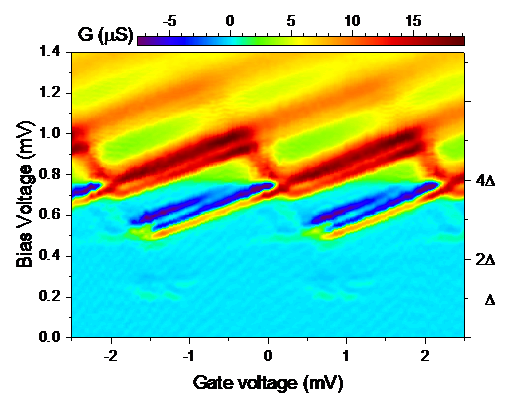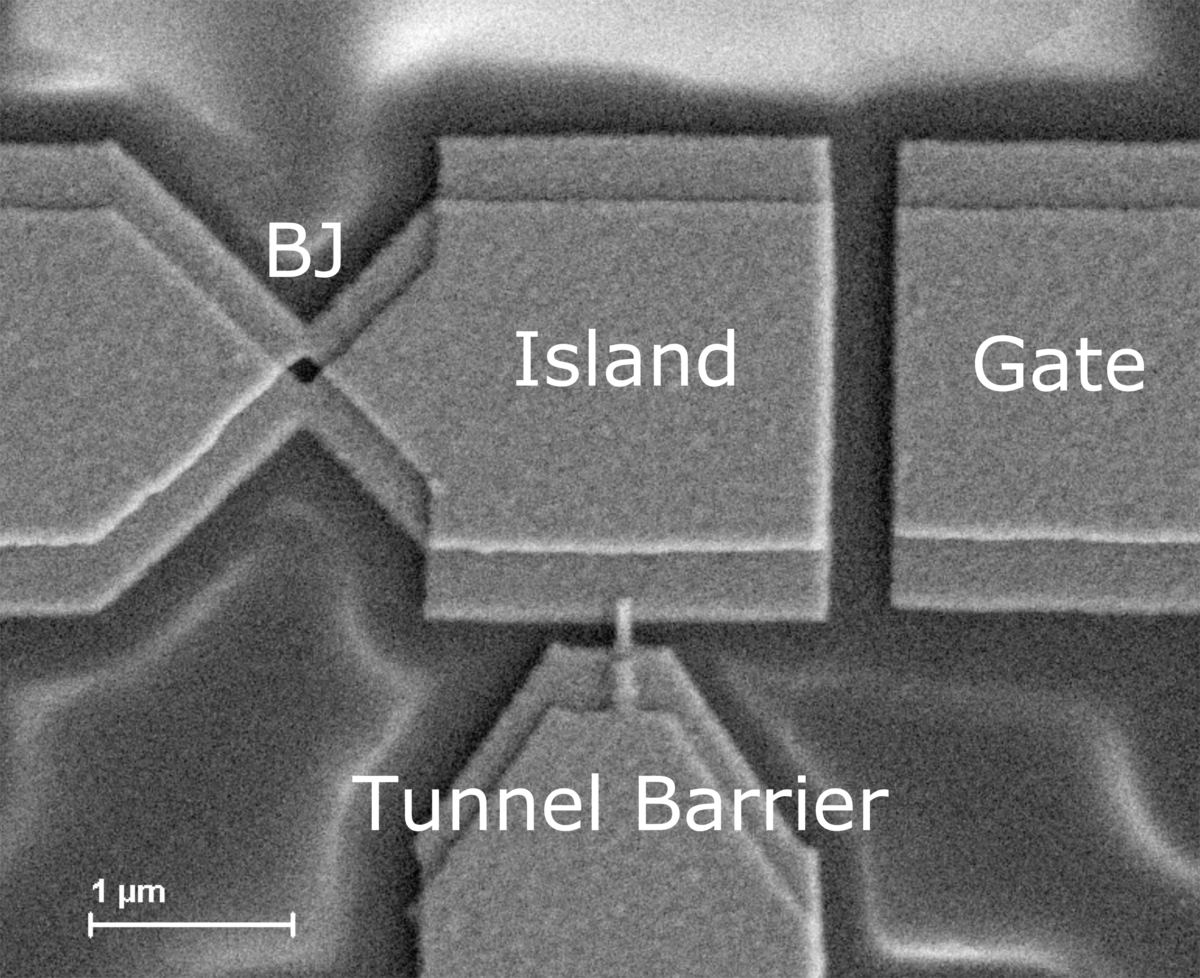
A circuit containing a small superconducting island of low capacitance coupled via two tunnel barriers to electrodes, sets two competing effects into competition: superconducting multiple charge transport and Coulomb Blockade (CB). Adding a gate electrode capacitively coupled to the island completes the so called superconducting single electron transistor (SSET).
All current passing through this SSET is subject to both competing phenomena: Assuming high resistance tunnel barriers, CB dominates and the current can be well described by the Orthodox theory [1]. In this regime only single quasiparticles will contribute to the current. Slightly reducing the resistance results in the appearance of the Josephson effect and of Andreev reflection, both involving pairs of electrons forming a Cooper pair.
Reducing the tunnel junctions resistance further, will drastically affect the CB. For resistances well below the quantum resistance RQ = h/e*2 , i.e. the so-called strong-coupling regime, CB will be completely suppressed. This situation has been studied in the normal conducting case [2]. In the case of mesoscopic contacts with only a few conductance channels the suppression will depend on the exact distribution of the quantum mechanical transmission probability of the individual channels. In a normal conducting SET, CB will vanish already if one single channel is fully opened, and the resistance equals RQ [3]. For contacts composed of a small number of partially open channels the situations has not been explored yet.

In this project we address this question by combining CB with superconductivity and with tunable contacts which accommodate a small number of channels. For this purpose, we replace one of the SSET’s tunnel contacts by a mechanically controllable break junction (BJ) (siehe Bild links). The BJ can be tuned from a mere tunnel contact via a mesoscopic contact to a fully conductive lead. This allows to study the change of the CB by changing contact regimes.
In addition, superconducting BJs are well known to show multiple Andreev reflections (MAR) for intermediate and high transmission. MAR are assumed to transport the current in packages of multiple charges. Since CB is sensitive to the number or charges transported via the island, this system is ideal to study simultaneously the influence of CB onto MAR (siehe Bild oben).
[1] R.J.Fitzgerald, Phys. Rev. B 57, R11073(R) (1998)
[2] P. Joyez, Phys. Rev. Lett. 79, 1349 (1997)
[3] S. Jezouin, Nature 536, 58-62 (2016)
Publications:
1. T. Lorenz, S. Sprenger, E.Scheer, Coulomb Blockade and Multiple Andreev Reflection in a Superconducting Single-Electron Transistor, J. Low. Temp. Phys (2018)
Information
Contributors: Susanne Sprenger, Laura Sobral-Rey, Patrick Haiber
Former contributors: Ursula Schröter, Paramita Kar Choudhury, Olivier Schecker, Thomas Lorenz
Period: since 2006
